油漆物证检验中血液干扰的去除
孙振文,乔 婷,陶克明,权养科
(公安部物证鉴定中心,北京 100038)
油漆物证检验中血液干扰的去除
孙振文,乔 婷,陶克明,权养科
(公安部物证鉴定中心,北京 100038)
对一起交通肇事逃逸案件中死者衣服上油漆碎片与嫌疑车漆片的成分进行比对检验。红外光谱检验结果显示,死者衣服上沾有血迹区域提取的油漆碎片与其他部位提取的油漆碎片谱图有差异。对凝固的血迹进行检验,发现差异可能来自于血液污染。通过红外光谱差谱技术将血迹区域提取的油漆碎片的红外谱图进行处理,所得谱图与衣服上其他区域提取油漆的红外谱图无明显差异,证实死者衣服上只有一种油漆,且与嫌疑车漆片成分相同,这为证实嫌疑车的肇事事实提供了科学依据。
油漆;血液;傅里叶变换红外光谱(FT-IR);干扰去除;交通肇事
DOΙ: 10.16467/j.1008-3650.2015.02.017
1 案例资料
2013 年1月,张某过马路时被一机动车撞倒后当场死亡,肇事机动车逃逸。现场勘查发现,张某衣服上有大量血迹,衣服破损部位附近有绿色漆状附着物,如图1所示。由于事故现场没有目击证人和监控录像,事故处理民警只能通过事发地点前后路口的两个摄像头进行排查,最终找到有肇事嫌疑的一辆绿色大货车,随后将大货车油漆与被害人衣服一同送往我中心进行检验。肉眼观察可见张某衣服布片上有2处绿色附着物(图1中a和b),a处绿色附着物附近有大片凝固的血迹(图中红色物质)。
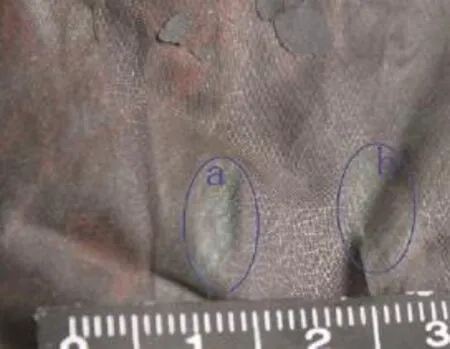
图1 张某衣服布片(a、b两处有绿色附着物)Fig.1 Area a and b of victim’s clothes with green paint smears on
经红外光谱仪检验,张某衣服布片上2处绿色附着物均为醇酸漆(红外特征吸收峰位于743,1071,1121,1263,1728cm-1),但两处绿色附着物的红外谱图有差异,主要体现在a处附着物在1658 cm-1附近出现吸收峰(见图2中箭头标识),而b处附着物无此吸收峰。通过红外谱图可以初步判断二者成分存在差异。从以往办案经验来看,出现此结果有两种可能:(1)衣服布片上有2种成分不同的油漆;(2)衣服布片上只有一种油漆,差异是由于绿色附着物周围的血液污染所致。
为验证检验结果,利用红外光谱仪对a处绿色附着物周围凝固血液进行检验,样品在1658,1544,1240cm-1附近出现吸收峰,分别属于酰胺I谱带、酰胺II谱带和酰胺III谱带的特征吸收峰[1],因此两处附着物红外谱图的差异应该来源于血液干扰。采用红外光谱差谱技术,从a处附着物的红外谱图中扣除凝固血迹的红外谱图,所得谱图(见图3)与b处附着物的红外谱图基本相同,说明a处附着物和b处附着物应为同一种油漆,证实了红外谱图差异来源于血液干扰的推测。进一步比较发现,张某衣服布片上绿色附着物与嫌疑车绿漆的红外谱图(见图4)基本相同。
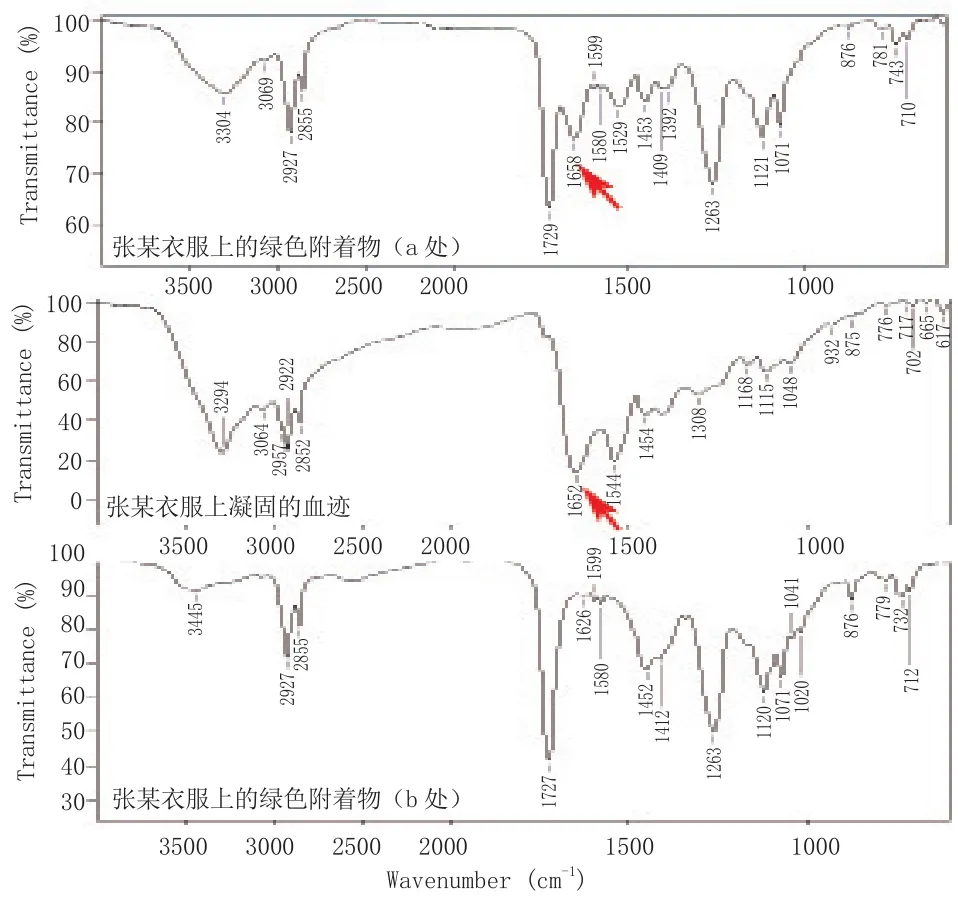
图2 张某衣服上两处绿色附着物及血迹的红外光谱图Fig.2 FT-ΙR spectra of green smears from area a, b, and bloodstain on victim’s clothes
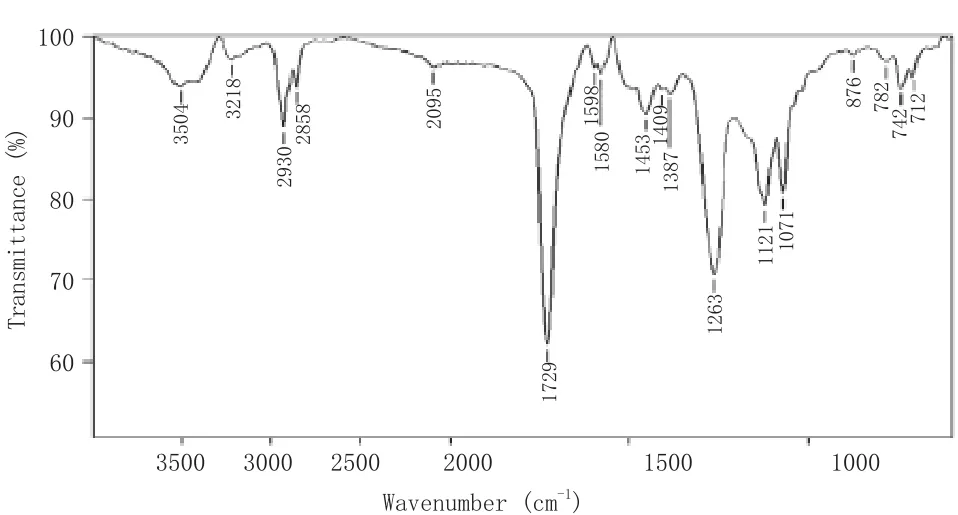
图3 差谱技术所得a处附着物的红外谱图Fig.3 Spectral-subtracted FT-ΙR spectrum of the green smears from area a
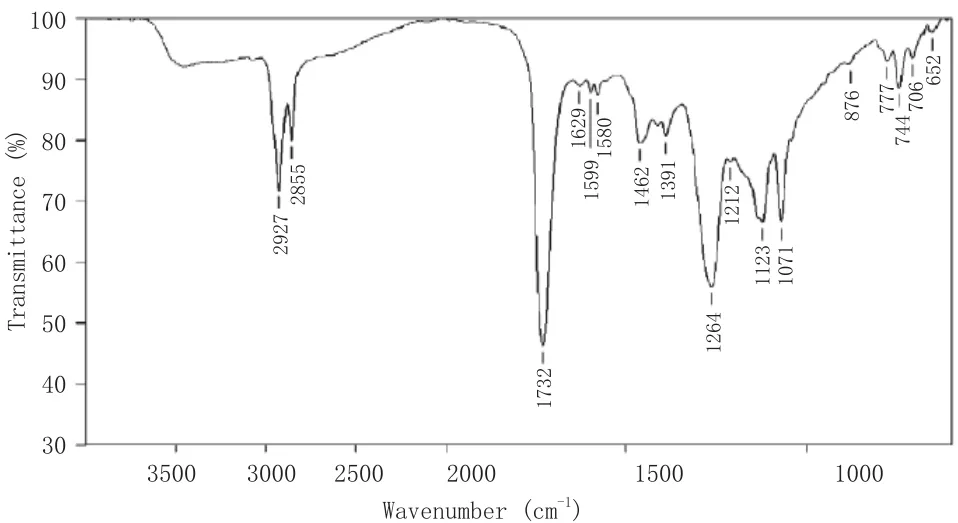
图4 嫌疑车绿漆的红外光谱图Fig.4 FT-ΙR spectrum of the green paint from the suspected truck
利用扫描电镜/能谱仪对附着物和嫌疑车绿漆的元素成分进行检验,张某衣服上的绿色附着物中检出Al、Si、S、Cl、Ca、Ba、Cr、Fe、Pb元素,嫌疑车绿漆中也检出Al、Si、S、Cl、Ca、Ba、Cr、Fe、Pb元素,结果见图5。
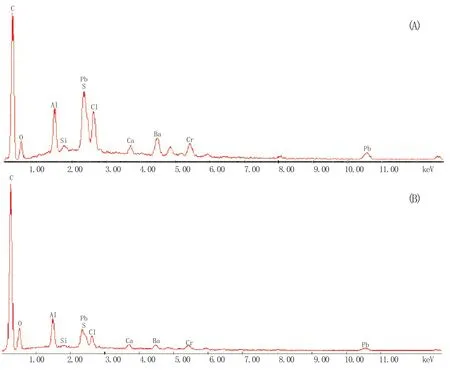
图5 扫描电镜/能谱检验结果。A:张某衣服上的绿色附着物;B:嫌疑车绿漆。Fig.5 SEM/EDS spectra of the samples.A: green smears on victim’s clothes; B: green paint from suspected truck.
根据上述检验结果,得出张某衣服上的绿色附着物与嫌疑车绿漆成分相同的结论,办案人员据此确定该车为肇事车辆,司机在科学的证据面前交待了肇事逃逸的事实。
2 讨 论
在油漆物证检验中,经常遇到尘土、机油、纤维等物质与油漆混合在一起难以分离,从而对油漆的检验结果带来干扰。因此,对干扰的准确判断和去除是油漆物证检验的关键。消除或减小外界物质干扰的常用方法有超声清洗、乙醚浸泡、乙醇清洗等,但这几种方法很多情况下并不能完全去除干扰,此时还可以借助谱图分析和后处理技术。本案中,差谱技术的应用成功实现了血液干扰的去除,为类似案件中油漆物证的检验提供了参考。
其次,大部分外来物质对油漆的干扰通过肉眼或立体显微镜能够观察到,在检验时可以通过区域选择的方式加以避免。而对于血液、机油等具有渗透性的物质干扰很难发现,此时需要在检验过程中特别注意差异的出现,准确判断哪些差异是油漆成分不同所致,哪些差异是外界物质干扰形成。对干扰的准确判断有助于采取相应的措施消除或减小干扰,避免得出错误结论。
此外,为准确确定附着物的组成,实际检验中往往需要提取多个部位的附着物进行检验,多个检验结果可以相互佐证,提高鉴定结果的准确性和可靠性。若检验时只提取某一部位的附着物进行检验,很容易得出错误结论,在油漆物证的检验中需要特别注意。
[1] Was J, Knittel D, Schollmeyer E.The use of FTIR microspectroscopy for the identification of thermally changed fibers[J].J Forensic Sci, 1996, 41: 1005-1011.
引用本文格式:孙振文,乔婷,陶克明,等.油漆物证检验中血液干扰的去除[J].刑事技术,2015,40(2):155-157.
Elimination of Blood Interference in Paint Evidence Analysis
SUN Zhen-wen, QΙAO Ting, TAO Ke-ming, QUAN Yang-ke
(Ιnstitute of Forensic Science, Ministry of Public Security, Beijing 100038, China)
Paint evidence is usually encountered in hit-and-run accident.Transfer of trace paint occurs frequently in the striking process of the objects involved.Ιt’s unavoidable that the paint smears are contaminated with environmental substances.Besides common contaminants, such as fi bers, oils and dusts, the contamination may also come from blood or other materials.Ιn order to achieve reliable conclusions, some countermeasures are required to recognize these interferences.This paper introduces a comparison examination of smeared paint samples from the victim’s clothes and the known paint chips of the suspected hitand-run truck.Microscopic examination of physical features of the paint samples was performed with a stereomicroscope fi rst;the organic components and elemental compositions were then analyzed with Fourier transform infrared spectroscopy (FTΙR) and scanning electron microscopy with energy-dispersive X-ray spectroscopy (SEM/EDS), respectively.There were some spectral differences between the smears collected from the “bloodstain” area and those from the other area of the victim’s clothes.FT-ΙR results indicated that there were two possibilities: (1) the smears on the victim’s clothes might come from two different kinds of paint; and/or (2) the smears collected from the “bloodstain” area of the victim’s clothes might be contaminated by other substances.Contamination of the “bloodstain” area was not discernible with visual inspection.However, being aware that the sample could have been contaminated by blood, we examined a piece of known bloodstain by ΙR, it showed strong bands at 1658 cm-1, 1544 cm-1and 1240 cm-1which were respectively attributed to the amide Ι, ΙΙ and ΙΙΙ, the typical absorption bands of protein.After software-enabled subtraction of the blood spectrum, the resultant spectrum of the smear sample collected from the “bloodstain” area showed no essential difference from those of the samples taken from the other areas, therefore, the smears collected from the victim’s clothes were supposed to be the same kind of paint.As the ΙR spectrums of the smears on the victim’s clothes and the paint from the suspected truck had no essential differences, combined with the results of SEM/EDS elemental analysis, the smears on the victim’s clothes very likely came from the suspected truck.The application of infrared spectral subtraction can help determine the chemical component of smeared samples.
paint; blood; fourier transform infrared spectroscopy(FT-ΙR); elimination of interference; hit-and-run accident
DF795.1
B
1008-3650(2015)02-0155-03
孙振文(1983—),男,山东章丘人,副研究员,博士,研究方向为微量物证。 E-mail:skbuffon@163.com
2014-10-23

